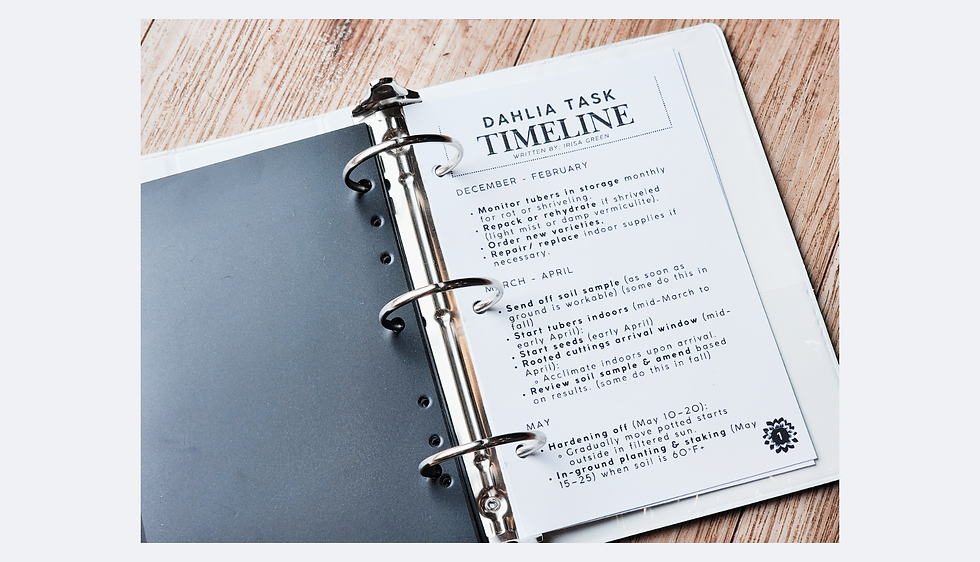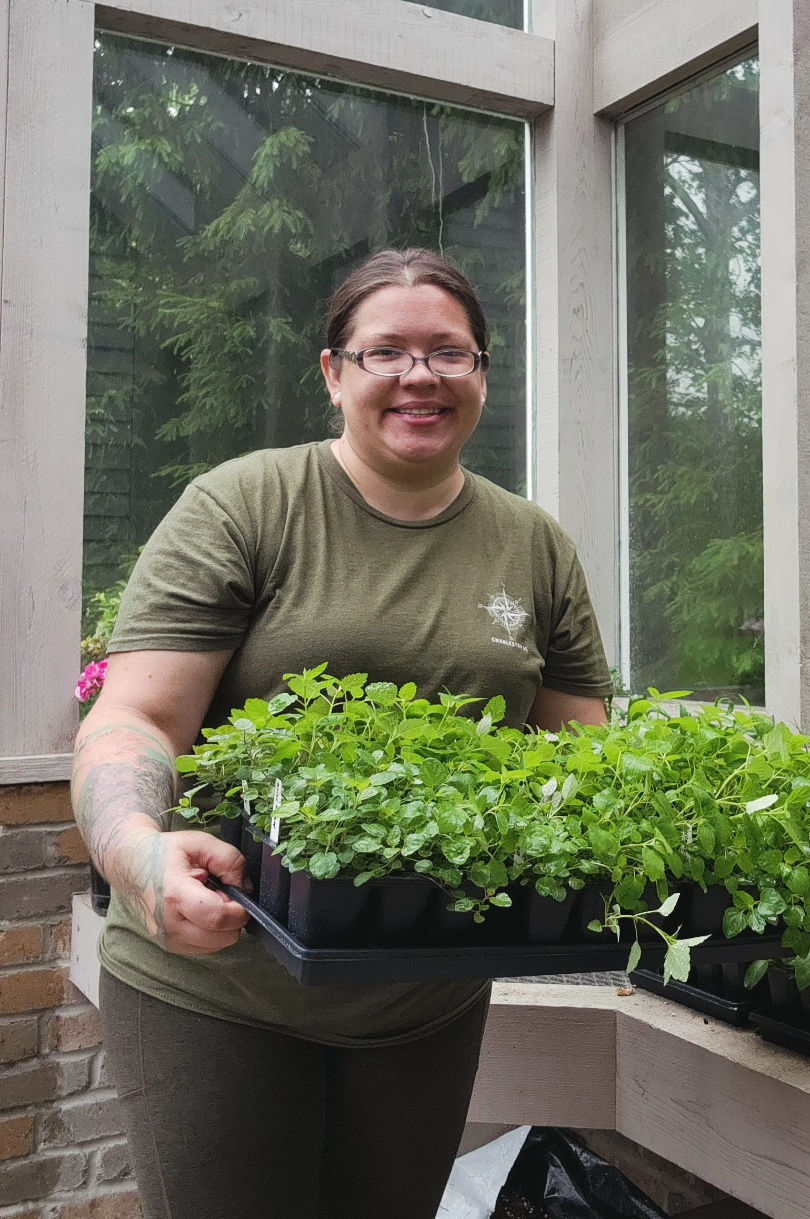My Dahlia Task Timeline for Zone 6B
- Sunstone Garden
- Aug 29
- 2 min read

Hi fellow Dahli-A-Holics! I’m excited to finally share the first section of a project I’ve been quietly compiling for myself, and now I’m opening it up for you too: I’ve created a 5.5″ × 8.5″ binder specially for my dahlia obsession, containing the American Dahlia Society composite book, classification guides, judging study materials, exhibition and growing resources.
This timeline reflects my personal dahlia direction: I’m focused on exhibition, but this timeline works for everyone in Zone 6B (or other zones with adaptation resources below). Keep in mind that everyone does things a little differently. This is just the way I do it. It’s simple: a month-by-month roadmap I use to keep my tubers happy and my blooms show-ready. And now, I’m offering it as a free download for you to tailor to your own zone.
Download & How to Adapt It
I’m offering the timeline as a free downloadable PDF. If you're interested, snag it here:

Not in Zone 6B? No worries—here’s how to adjust it to your zone:
Check your zone’s average last frost date—this tells you when it’s safe to start planting outdoors. The USDA’s Hardiness Zone Finder and local gardening almanacs are great sources. For example, most gardeners in Zone 6 see last frost between April 1–21, and first frost around October 17–31—so you can shift tasks accordingly. First and Last Frost Dates by ZIP Code | The Old Farmer's Almanac
Adjust by zone:
Zone 7 and warmer: You can safely plan to plant tubers outdoors earlier—generally two weeks ahead of Zone 6 timings. You may even overwinter certain varieties in the ground with mulch protection.
Zone 5 and cooler: Wait a little longer—perhaps a week or two after your last frost date—to ensure the soil is warmed. And plan to dig tubers sooner after fall frosts.
Find your nearest Extension office for growing resources in your zone. Find Extension in Your State – Extension Foundation
Monitor soil temperature—dahlias prefer the ground to be at least 60 °F before planting tubers to avoid rot. In cooler climates, you could start indoors 6–8 weeks before transplanting outside.
These simple reference points let you slide my Zone 6B timeline into your own calendar, gently nudging planting, feeding, and harvesting tasks earlier or later depending on your zone.
Why I Made This Binder & Timeline
I’m drawn to the art and precision of dahlia exhibition and hope to breed & judge in the future. This binder keeps everything—from society resources to show prep—organized in one place. The timeline is the beat that keeps my process consistent, helping me plan staking, pinching, feeding, and harvesting on a dependable rhythm.
I hope it helps you feel more in control of your season too—whether you're growing for beauty, blooms, shows, or seed trials.
I’d love to hear how you use the timeline:
Do you live in a warmer or cooler zone?
Will you shift the timeline forward or backward?
Are you growing for flower shows, personal joy, or breeding?
Happy planting and may your 2026 be full of gorgeous exhibition-worthy dahlias!






Comments